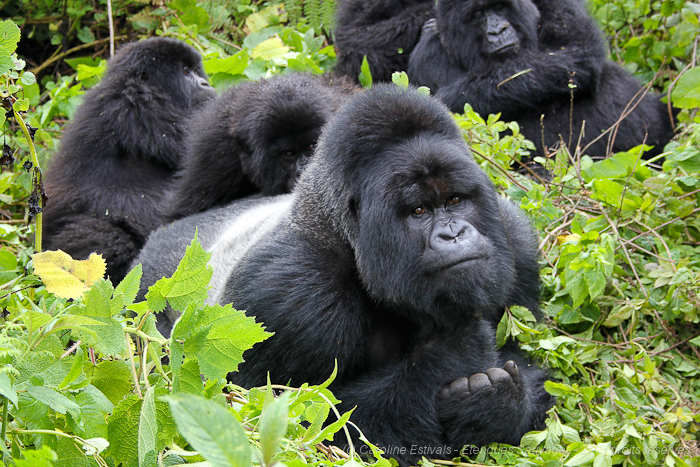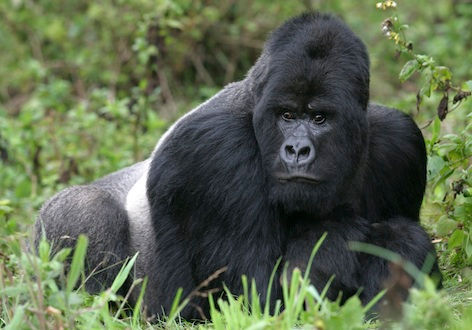
CREATURE-PEDIA
Gorilla




Gorillas are ground-dwelling, predominantly herbivorous apes that inhabit the forests of central Africa. The eponymous genus Gorilla is divided into two species: the eastern gorillas and the western gorillas, and either four or five subspecies. Gorillas move around by knuckle-walking, although they sometimes walk bipedally for short distances while carrying food or in defensive situations. Wild male gorillas weigh 298 to 397 lb while adult females usually weigh half as much as adult males at up to 150 to 249 lb. Adult male gorillas are known as silverbacks due to the characteristic silver hair on their backs reaching to the hips. The eastern gorilla is more darkly coloured than the western gorilla, with the mountain gorilla being the darkest of all. The mountain gorilla also has the thickest hair. The western lowland gorilla can be brown or grayish with a reddish forehead. In addition, gorillas that live in lowland forests are more slender and agile than the more bulky mountain gorillas. The eastern gorilla also has a longer face and broader chest than the western gorilla. Gorillas live in groups called troops. Troops tend to be made of one adult male or silverback, multiple adult females and their offspring. However, multiple-male troops also exist. A silverback is typically more than 12 years of age, and is named for the distinctive patch of silver hair on his back, which comes with maturity. Silverbacks also have large canine teeth that also come with maturity. Both males and females tend to emigrate from their natal groups. For mountain gorillas, females disperse from their natal troops more than males. The range of the two species is separated by the Congo River and its tributaries. The western gorilla lives in west central Africa, while the eastern gorilla lives in east central Africa. Between the species and even within the species, gorillas live in a variety of habitats and elevations. Gorilla habitat ranges from montane forests to swamps. Eastern gorillas inhabit montane and submontane forests between 2,130 and 13,120 ft above sea level. Mountain gorillas live in the montane forests at the higher ends of the elevation range. Mountain gorillas mostly eat foliage, such as leaves, stems, pith, and shoots, while fruit makes up a very small part of their diets. Mountain gorilla food is widely distributed and neither individuals nor groups have to compete with one another. Their home ranges average 3–15 km2 (1.16–5.79 mi 2), and their movements range around 500 m or less on an average day. Females mature at 10 to 12 years (earlier in captivity), and males at 11 to 13 years. A female’s first ovulatory cycle occurs when she is six years of age. The gestation period lasts 8.5 months. A gorilla's lifespan is normally between 35 and 40 years, although zoo gorillas may live for 50 years or more. Since coming to the attention of western society in the 1860s, gorillas have been a recurring element of many aspects of popular culture and media. For example, gorillas have featured prominently in monstrous fantasy films such as King Kong. Pulp fiction such as Tarzan and Conan the Barbarian has featured gorillas as physical opponents of the titular protagonists.
Fun Fact
Like all primates, Gorillas do social grooming, picking off bugs on other gorillas.

